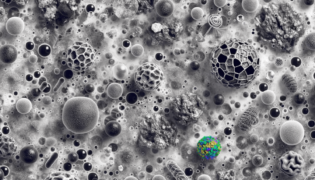No, the sun does not cause skin tags, as they are benign skin growths primarily caused by friction and genetics. However, excessive sun exposure can cause other skin issues, such as sunburn and skin aging.
Understanding Skin Tags and Sun Exposure
Skin tags, also known as acrochordons, are small, non-cancerous growths that develop in areas where skin rubs against skin or clothing. While they are not directly caused by sun exposure, it is essential to protect your skin from harmful UV rays to prevent other skin issues. At Skincare Logix, we emphasize the importance of proper sun protection for overall skin health.
Factors Responsible for Skin Tags
Some common factors responsible for skin tags include genetics, obesity, hormonal changes, and age. Although the sun doesn’t cause skin tags, it’s essential to be aware of these factors and take necessary precautions.
Addressing Your Skin Tag Concerns
At Skincare Logix, a blog about skincare, we recommend consulting a dermatologist if you’re concerned about skin tags. They can assess your skin and recommend suitable skin tags remover options, such as surgical removal, cryotherapy, or cautery.
Preventing Skin-related Problems
To prevent skin issues related to sun exposure, utilize broad-spectrum sunscreens with a minimum of SPF 30, wear protective clothing, and avoid staying in the sun during peak UV hours.
Does the Sun Cause Skin Tags?
Skin tags are a common cosmetic concern affecting millions of people worldwide. One question that often arises about skin tags is whether or not sun exposure can cause them. In this blog post, we will discuss the relationship between sun exposure and skin tags, as well as how to care for your skin and remove skin tags safely.
The Myth about Sun Exposure and Skin Tags
Although the sun can cause a variety of skin issues, such as sunburn, premature aging, and an increased risk of skin cancer, it is not responsible for the formation of skin tags. At Skincare Logix, a blog about skincare, we aim to clear up misconceptions surrounding skin tags and provide accurate, reliable information to keep your skin healthy and glowing.
Risk Factors for Skin Tags
While sun exposure is not a risk factor for skin tags, there are several other factors that can contribute to their formation. Obesity, hormonal fluctuations, and genetics, among others, play a role in the development of skin tags. It’s vital to be aware of these risk factors and maintain a healthy lifestyle to minimize the likelihood of developing skin tags.
Treating and Preventing Skin Tags
If you already have skin tags and wish to remove them, consult with a dermatologist who can prescribe an appropriate skin tags remover, such as surgical removal, cryotherapy, or cautery. However, it’s essential to remember that skin tags are benign and generally harmless. They may not require removal unless they cause discomfort or irritation.
Protecting Your Skin
Even though sun exposure does not lead to the formation of skin tags, it’s still crucial to protect your skin from harmful UV rays. To prevent sun-related skin problems, always wear broad-spectrum sunscreen with at least SPF 30, avoid tanning beds, and wear protective clothing and sunglasses. Regular skin check-ups with a dermatologist can ensure the timely detection and treatment of any skin issues that may arise.
Frequently Asked Questions About Skin Tags and Sun Exposure
We understand that you may have further questions related to skin tags and sun exposure after reading our blog post. To provide you with more clarity, we have compiled a list of frequently asked questions and provided concise answers.
Are skin tags a sign of skin cancer?
No, skin tags are benign, non-cancerous growths, and they are not considered a sign of skin cancer. However, consult a dermatologist if you notice any changes in the appearance or symptoms of your skin tags.
Can I remove skin tags at home?
DIY removal of skin tags is not recommended, as it can lead to infections, scarring, or other complications. It’s best to consult a dermatologist for a safe and effective skin tags remover treatment.
Can skin tags grow back after removal?
Once a skin tag is removed professionally, it is unlikely to grow back in the same spot. However, the development of new skin tags in other areas is still possible, especially if the causative factors persist.
How can I differentiate between skin tags and moles?
Skin tags typically have a stalk-like base and are soft to the touch. Moles, on the other hand, are flatter and have a more uniform color. If you are unsure about a skin growth, it’s best to consult a dermatologist for a proper evaluation.
Besides sunscreen, what other steps can I take to protect my skin from the sun?
In addition to wearing sunscreen, you can protect your skin by wearing hats, sunglasses, and UV-protective clothing, seeking shade when necessary, and avoiding peak sun exposure hours (typically between 10 a.m. and 2 p.m.).





















